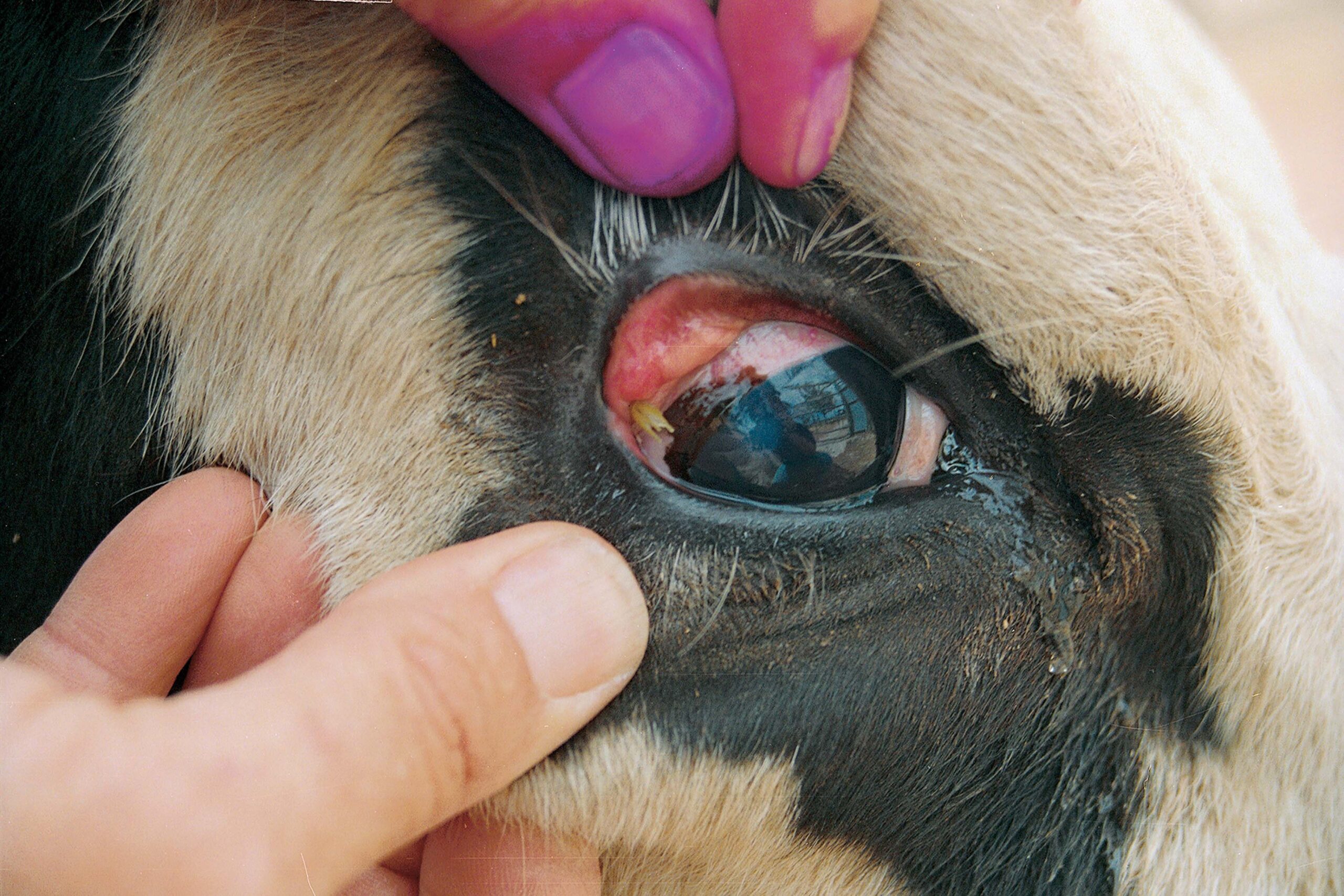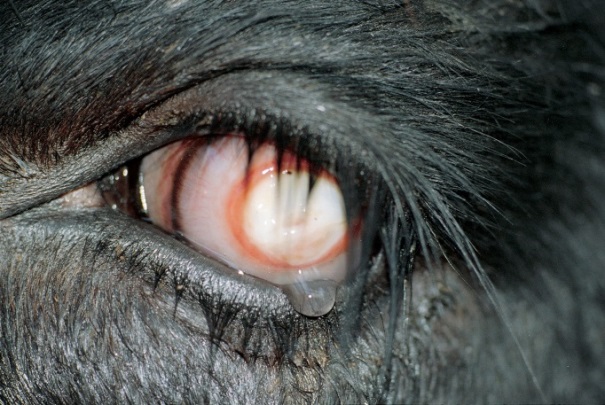
Spring Diseases in Livestock
Understanding and Managing Pink Eye, Bloat, and Grass Tetany
Spring is a season of renewal and growth, but for livestock producers, it also brings a unique set of challenges. As pastures turn green and animals transition to fresh forage, the risk of diseases such as pink eye, bloat, and grass tetany increases. These conditions can significantly impact animal health, productivity, and farm profitability. We will explore the causes, symptoms, prevention, and management of these common spring diseases, providing valuable insights for livestock producers.
1. Pink Eye (Infectious Bovine Keratoconjunctivitis)
Pink eye, or infectious bovine keratoconjunctivitis (IBK), is a highly contagious eye infection that affects cattle, particularly during the spring and summer months. It is caused by the bacterium Moraxella bovis and is characterized by inflammation of the cornea and conjunctiva.
Causes and Risk Factors
- Bacteria: Moraxella bovis is the primary causative agent, but other bacteria and viruses can also contribute.
- Environmental Factors:
- Dust, pollen, and tall grass can irritate the eyes, making them more susceptible to infection.
- Bright sunlight and ultraviolet (UV) radiation can exacerbate the condition.
- Insect Vectors: Face flies and other insects can spread the bacteria from infected to healthy animals.
- Poor Nutrition: Weakened immune systems due to inadequate nutrition increase the risk of infection.
Symptoms
- Early Signs:
- Excessive tearing and redness in the eye.
- Sensitivity to light (photophobia).
- Advanced Symptoms:
- Cloudiness or ulceration of the cornea.
- Swelling and discharge from the eye.
- In severe cases, blindness or permanent eye damage.
Prevention and Management
- Vaccination: Vaccines are available for Moraxella bovis and can reduce the incidence of pink eye.
- Insect Control:
- Use fly repellents, insecticide ear tags, and face fly traps to reduce insect populations.
- Keep pastures mowed to minimize fly habitats.
- Environmental Management:
- Provide shade to protect animals from UV radiation.
- Reduce dust by maintaining clean feeding and watering areas.
- Early Treatment:
- Isolate infected animals to prevent the spread of the disease.
- Administer antibiotics (topical or systemic) and anti-inflammatory medications as prescribed by a veterinarian.

2. Bloat (Ruminal Tympany)
Bloat is a digestive disorder that occurs when gas accumulates in the rumen, causing it to distend. It is most common in cattle grazing on lush, legume-rich pastures, particularly in the spring.
Causes and Risk Factors
- Dietary Factors:
- Rapid consumption of fresh, high-protein forages such as alfalfa, clover, or young grasses.
- Low fiber content in the diet, which reduces rumen motility.
- Animal Factors:
- Individual susceptibility, with some animals being more prone to bloat than others.
- Stress or changes in feeding patterns can increase the risk.
- Environmental Factors:
- Wet, dewy pastures can increase the likelihood of bloat.
Symptoms
- Mild Bloat:
- Distension of the left flank (rumen).
- Discomfort and restlessness.
- Severe Bloat:
- Rapid swelling of the abdomen.
- Difficulty breathing due to pressure on the diaphragm.
- Collapse and death if not treated promptly.
Prevention and Management
- Pasture Management:
- Gradually introduce animals to lush pastures to allow rumen adaptation.
- Provide access to dry hay or grass to balance the diet.
- Feed Additives:
- Use anti-bloating agents such as poloxalene in feed or mineral supplements.
- Add ionophores (e.g., monensin) to reduce gas production in the rumen.
- Monitoring:
- Observe animals closely during the first few weeks of spring grazing.
- Identify and treat early signs of bloat to prevent progression.
- Emergency Treatment:
- Pass a stomach tube to release gas.
- Administer anti-foaming agents (e.g., vegetable oil or commercial products) to break down foam in the rumen.
- In severe cases, a veterinarian may need to perform a rumenotomy (surgical intervention).
3. Grass Tetany (Hypomagnesemia)
Grass tetany, also known as hypomagnesemia, is a metabolic disorder caused by low levels of magnesium in the blood. It primarily affects lactating cows grazing on lush, rapidly growing pastures in the spring.
Causes and Risk Factors
- Dietary Factors:
- Low magnesium levels in spring grasses, especially those high in potassium and nitrogen.
- Insufficient intake of magnesium supplements.
- Animal Factors:
- Lactating cows have higher magnesium requirements due to milk production.
- Older cows are more susceptible due to reduced magnesium absorption.
- Environmental Factors:
- Cold, wet weather can reduce magnesium availability in plants and increase the risk of tetany.
Symptoms
- Early Signs:
- Restlessness, irritability, and muscle twitching.
- Reduced appetite and milk production.
- Advanced Symptoms:
- Staggering, convulsions, and collapse.
- In severe cases, death within a few hours.
Prevention and Management
- Magnesium Supplementation:
- Provide magnesium supplements (e.g., magnesium oxide) in feed or mineral mixes.
- Use high-magnesium lick blocks or boluses for grazing animals.
- Pasture Management:
- Avoid overgrazing and ensure access to mature grasses, which have higher magnesium levels.
- Incorporate legumes into pastures, as they are richer in magnesium than grasses.
- Monitoring:
- Regularly check blood magnesium levels in high-risk animals.
- Watch for early signs of tetany, especially during periods of rapid grass growth.
- Emergency Treatment:
- Administer intravenous or subcutaneous magnesium solutions to affected animals.
- Provide oral magnesium supplements to prevent recurrence.
The Economic Impact of Spring Diseases
Spring diseases such as pink eye, bloat, and grass tetany can pose serious economic challenges for livestock producers, affecting both productivity and profitability. The financial burden begins with treatment costs, which include expenses for medications, veterinary consultations, and emergency interventions required to manage these conditions effectively.
Additionally, diseased animals often suffer from reduced productivity, leading to lower milk yields, weight loss, and poor growth rates, ultimately impacting overall herd performance. In severe cases, mortality due to bloat or grass tetany results in direct financial losses, as the death of valuable livestock disrupts breeding programs and reduces marketable stock. Beyond direct costs, these diseases also increase labor demands, as farmers and caretakers must dedicate additional time and effort to monitoring, diagnosing, and treating affected animals. This not only raises operational expenses but also diverts resources from other essential farm activities.
Furthermore, prolonged outbreaks can weaken herd immunity, making animals more susceptible to future health issues, further compounding financial losses. To mitigate these risks, proactive health management, including proper nutrition, timely vaccinations, and effective pasture management, is crucial in preventing disease outbreaks and ensuring the long-term sustainability of livestock operations.
Integrated Approach to Spring Disease Management
Managing spring diseases requires a holistic approach that combines good nutrition, pasture management, and proactive health care. Key strategies include:
- Nutritional Planning:
- Ensure balanced diets that meet the nutritional needs of livestock during the spring transition.
- Provide adequate mineral supplements, especially magnesium and calcium.
- Pasture Management:
- Rotate pastures to prevent overgrazing and allow forage recovery.
- Monitor forage quality and adjust grazing practices accordingly.
- Health Monitoring:
- Regularly inspect animals for signs of disease.
- Work with a veterinarian to develop a herd health plan tailored to your farm’s needs.
- Education and Training:
- Educate farm staff about the risks and symptoms of spring diseases.
- Train them in emergency response procedures for conditions like bloat and grass tetany.
Conclusion
Spring is a critical time for livestock producers, as the transition to fresh forage brings both opportunities and challenges. Diseases like pink eye, bloat, and grass tetany can have serious consequences for animal health and farm profitability, but with proper understanding and management, their impact can be minimized. By adopting preventive measures, monitoring animal health, and responding promptly to early signs of disease, producers can ensure a successful and productive spring season.
For livestock farmers, staying informed and proactive is the key to navigating the challenges of spring diseases. Together, we can protect the health and well-being of our animals and build a resilient and sustainable farming future.


















